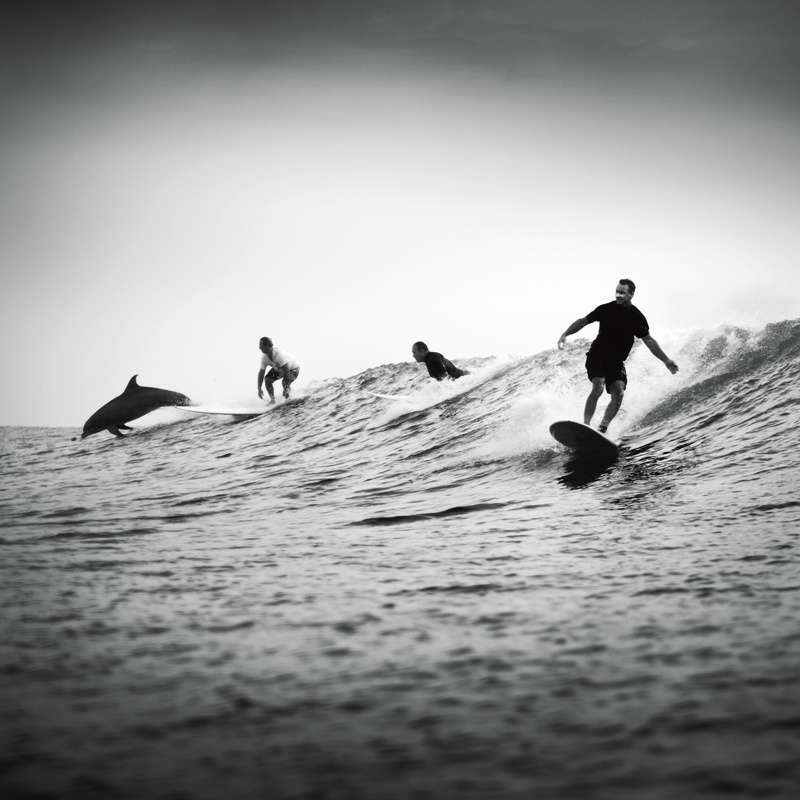I grew up in Houston, about fifty miles from the Gulf Coast. My earliest memories of the beach were of family outings and fishing trips to Rockport with my aunt and uncle. I’ve always loved being on the Texas coast. But when I discovered surfing, that love turned into an obsession.
No one would confuse the surf in Texas with some famous break on the Pacific Ocean, but that doesn’t matter. Texas surfers are as maniacally devoted to the sport as surfers are all over the planet. My friends and I weren’t proud; we would surf on anything rideable. We’d drive down to the beach with $30 in our pockets and stay for a week, sleeping in tents and eating sandy sandwiches.
We started riding waves in the mid-seventies, which put us in the second generation of Texas surfers. The first generation consisted of the pioneers from the sixties who discovered surfing in California, wondered whether it could be done in Texas, and brought back boards to give it a try. Texas is not widely known for its great surf but, as that first generation discovered, if you know when to look, and if you look hard and patiently enough, it’s there. There are, after all, over 600 miles of coastline, and the Gulf of Mexico reliably produces lots of wind and waves via low pressure systems, northers, storms, and hurricanes.
Yes, in the Gulf of Mexico surfers ride the wakes of tankers. When the ocean itself won’t supply a wave, you have to have the nerve and ingenuity to search out other things that will. That’s the way it is in Texas, and that’s what Kenny Braun has focused his camera upon with such quietly spectacular effect.
—Stephen Harrigan
When I moved to Austin in the mid-eighties and no longer had close access to saltwater, my opportunities for surfing naturally diminished, but my obsession never quite disappeared. I started work on this book twelve years later, in part so that I could reconnect and try to understand what it was about surfing and the Gulf Coast that had made such a deep and permanent impression upon me.
I think of myself less as a surf photographer than as a photographer who loves to surf. The essence of surfing, like most sports, is ultimately impossible to photograph or write about. Dreams and memories inform much of the work here. The photographs, I hope, chronicle both Texas’s surfing past and its present. At the beach nothing ever changes and nothing is ever the same. The same is true of surfing. Board designs and fashions may change, but the urge to ride a wave, the search for that next perfect swell, is a timeless human preoccupation.
I think about time as I watch the waves growing into the same forms that were seen by our ancient ancestors. As I watch my kids play in the surf, I remember seeing the Gulf for the first time. I remember countless hours spent with friends and family. Time spent at the beach is a return to the source—an intimate and immediate connection with the natural world. You’re riding a wave and you look around at the fish and dolphins that are riding it, too—and somehow it just makes sense. Surfing has become commercialized, trivialized, and mythologized, but its primal appeal is pure. In these photographs, I hope I have managed to portray some of that enduring fascination, as well as the singular and sometimes unexpected beauty of the Texas coast.
——————–
Kenny Braun is an Austin photographer. Text and photo excerpted from Surf Texas (University of Texas Press, 2014).








